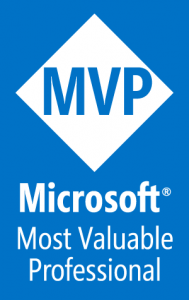The wait is over! First publicly announced at Ignite 2017, SharePoint Hub Sites just reached a major milestone with a 100% rollout for Targeted Release tenants on Office 365! This means that we have not reached full General Availability for every Office 365 tenant just yet, that’s likely only a few weeks away, but many of us can get started today. Time to jump in!
If you’re looking for a primer on SharePoint hub sites, I recommend this post from Microsoft, https://support.office.com/en-us/article/what-is-a-sharepoint-hub-site-fe26ae84-14b7-45b6-a6d1-948b3966427f.
Two hot SharePoint Hub site questions I continue to hear are, what do hub sites actually offer and how will they fit into the current communication and collaboration structure of my organization? For answers to these burning issues, check out Learn how to integrate hub sites into your architecture in this post by Mark Kashman (Senior Product Manager, Microsoft).
If you’re looking to dive deeper and want some more guidance, or you prefer to consume your training via in-action demos or video, the talented folks over at Collab365 hosted a chat you won’t want to miss. “Intranet Strategy & Planning with SharePoint Hub Sites & Office 365” with my good friends Mark Kashman and Sue Hanley along with Sam Marshall and host Andy Talbot, provides another excellent overview of SharePoint Hubs. Mark, Sue, and Sam also dig into strategy and planning. This is a must-watch for anyone tasked with managing SharePoint sites in any capacity.
Watch the chat now
Diving In
Pro tip: Get started with Hub sites now. Why? It will help you determine how SharePoint Hub sites will affect your digital communication and collaboration tools and strategies in the future.
Prerequisites
As of today, you’ll need a SharePoint Online tenant that is set to targeted release. Second, you’ll need SharePoint Online tenant administrative access, or you’ll need to get friendly with your tenant admin. The only way to register a modern team site or communication site as a hub site is via PowerShell, in particular using the most recent version of the SharePoint Online Management Shell. Hopefully Microsoft will create a friendly UI but for now, we’re limited to PowerShell.
Common SharePoint Hub Commands
There are common PowerShell commands you’ll use to work with SharePoint Hub sites. In the following examples, I use a placeholder tenant “pixelmillhubs“. You’ll want to replace this string with your tenant. I also created a site “hub”, which could be either a modern team site or communication site. This is the site I want to register as a SharePoint Hub site. The second site I created is “member”, which also can be either a modern team site or communication site. This is the site I will want to associate with a SharePoint Hub.
- Connect to your SharePoint Online tenant
1Connect-SPOService -Url https://pixelmillhubs-admin.sharepoint.com
- Convert an existing modern site (team or communication) to a Hub. In this case I am going to register the site “hub”.
1Register-SPOHubSite https://pixelmillhubs.sharepoint.com/sites/hub
- Get information regarding a specific Hub site
1Get-SPOHubSite https://pixelmillhubs.sharepoint.com/sites/hub
- Update information regarding a specific Hub site such as the hub title, hub logo, and hub description.
1Set-SPOHubSite https://pixelmillhubs.sharepoint.com/sites/hub -Title "Testing Hub" -LogoUrl https://pixelmillhubs.sharepoint.com/sites/hub/SiteAssets/hublogo.png -Description "Hub for the testing"
- Associate a site with a hub site. In this case I want to associate a site “member” to the hub site “hub”
1Add-SPOHubSiteAssociation https://pixelmillhubs.sharepoint.com/sites/member -HubSite https://pixelmillhubs.sharepoint.com/sites/hub
- Remove the hub association for a site to remove it from a hub
1Remove-SPOHubSiteAssociation https://pixelmillhubs.sharepoint.com/sites/member
- Unregister a hub site
1Unregister-SPOHubSite https://pixelmillhubs.sharepoint.com/sites/hub
Detailed documentation for the PowerShell commandlets available for hub sites may be found over at docs.microsoft.com.
Limitations
SharePoint Hubs show great promise but there are limitations to consider. Any / all of my comments may be subject to change as Microsoft continues to evolve the product, but as of March 2018, the following matches my experiences.
- Hubs cannot be added to other hubs. We’re currently unable to nest hubs.
- Member sites of hubs will auto-inherit the hub navigation and hub site theme. There are rumblings that this may become more flexible, but for now this is set.
- I believe that when associating a site to a hub, the associated site is supposed to be auto injected into the hub navigation. I have found this not to be the case, but this may change.
- Sites may only be associated with one hub.
- Hubs are only available for SharePoint Online. In my opinion, Hubs have a .0001% chance of landing on SharePoint 2016. I have not heard what will be included in SharePoint 2019, but my bet is that when SP 2019 is released we won’t see hubs. If this changes, I’ll let you know.
- Registering a Hub requires tenant admin access. This to me is clear indication that Microsoft expects Hubs to be a administrative task, not for power users or general site admins to create on a whim. Consider this in your Hub rollout, promote sites to hubs with a strong purpose in mind.
Don’t wait, get started today
With the eminent release of SharePoint Hub sites for General Availability, if you do not yet have Targeted release access, I urge you to get started with your education. If you can, attend SharePoint Conference North America taking place in Las Vegas May 21-23, 2018. I’m confident there will be quite a bit information on how best to use SharePoint Hubs.
What’s your experience with SharePoint Hub sites? Are they going to save your communication and collaboration toolset? Do they not make sense to you and you are still looking for the use case? Let’s continue the conversation.






Speak Your Mind